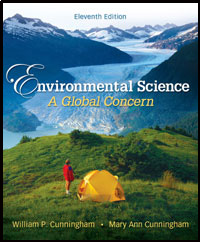1 A) a highly organized endeavor. B) essentially an information gathering endeavor. C) oriented toward solving problems. D) designed to understand relationships. 2 A) how environmental problems occur B) socially acceptable solutions to environmental problems C) practical solutions to environmental problems D) all of the above 3 A) Teddy Roosevelt B) Rachel Carson C) Gifford Pinchot D) John Muir 4 A) 10 million B) 100 million C) 500 million D) 1 billion 5 A) improving people's lives in the present in a way that can continue far into the future. B) providing ever-increasing amounts of adequate housing. C) continued growth indefinitely. D) utilizing an ever-increasing quantity of natural resources. 6 A) their homelands contain natural habitats least disturbed by humans. B) their homelands contain a huge proportion of earth's biodiversity. C) their languages represent encoded knowledge of nature that is irreplaceable. D) all of the above are correct. 7 A) George Perkins Marsh's 1864 publication of (ital)Man and Nature(/ital). B) Rachel Carson's (ital)Silent Spring(/ital), alerting the public to the dangers of pollution in 1962. C) Roosevelt's warnings about overuse a century ago. D) Plato's writings 2500 years ago. 8 A) the number of TV sets, VCRs, and CD players per household. B) the number of automobiles per household, miles driven, pounds of resources used, and so forth. C) per capita waste production. D) life expectancy, literacy rate, and availability of clean water. 9 A) biocentric preservation. B) utilitarian conservation. C) environmentalism. D) global environmentalism. 10 A) Japan B) Germany C) Russia D) The United States 11 A) TRUE B) FALSE 12 A) TRUE B) FALSE 13 A) TRUE B) FALSE 14 A) TRUE B) FALSE 15 A) TRUE B) FALSE 16 A) Increasing economic activity has increased China's demand for goods and raw materials B) Pollution generated in China impacts other nations, including the United States C) China is the world's largest producer of many pollutants, including carbon dioxide. D) All of the above 17 A) True B) False 18 A) In 1912 to John Muir B) In 1973 to David Brower C) In 2004 to Wangari Maathai D) In 1935 to Aldo Leopold 19 A) 2/3 of all agricultural lands show signs of degradation B) There is little corporate interest in food production C) Agriculture has not benefited from modern technological advancements D) None of the above 20 A) non-renewable resources B) the capacity of the biosphere to absorb waste C) newly developed renewable technologies D) 1 and 2 are correct





